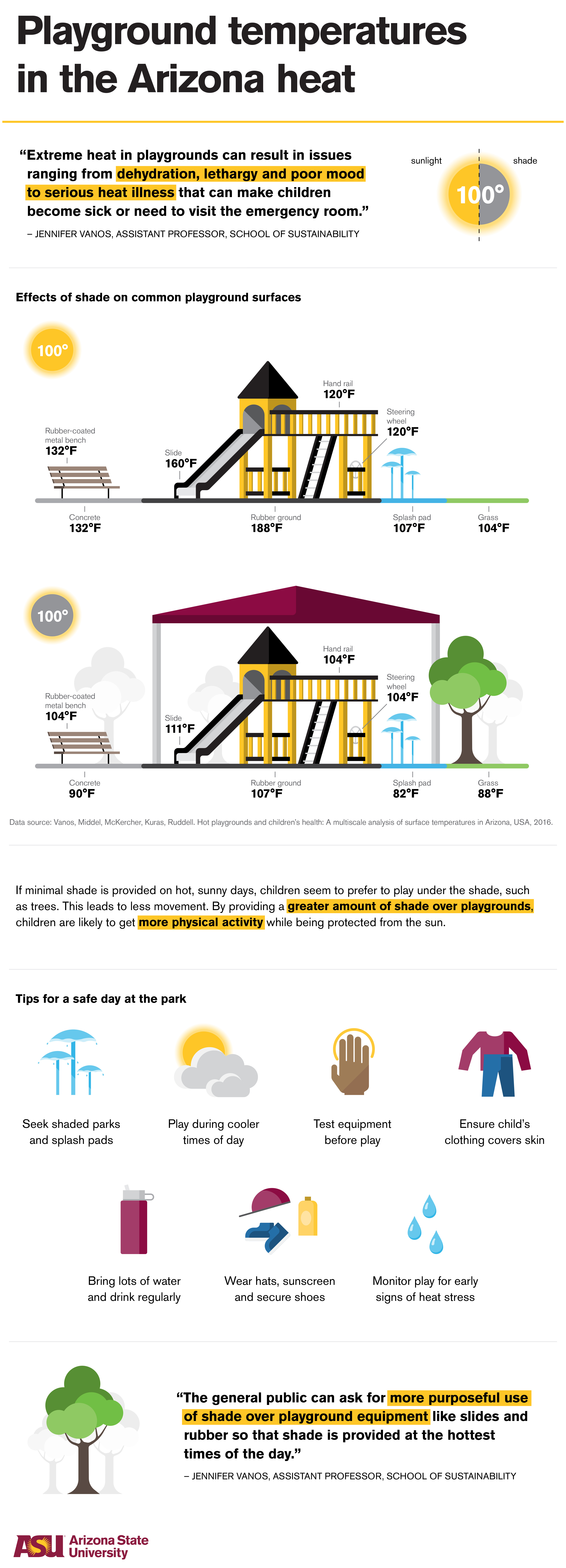Editor's note: As Arizona continues to battle COVID-19, please follow social distancing and face covering guidelines in public at all times, including playgrounds.
A day at the playground can be tempting on a bright sunny day, but in the Arizona heat, it can also be dangerous.
Children playing outside during Arizona summers can face 100 days or more of temperatures north of 100°F. Too often playgrounds use heat-retaining, unnatural surfaces in the middle of parks with no shade, especially in Phoenix. These unshaded playgrounds can act as mini heat islands, which can disincentivize physically active play or even lead to burns.
ASU urban climate researchers Jennifer Vanos and Ariane Middel believe proper shading of playgrounds may be a solution.
“Shade protects children from the sun and keeps playground equipment cool and touchable,” said Middel. Their research provides insight into these spaces, as well as tips on keeping children safe in the heat.
Infographic by Alex Davis/Media Relations and Strategic Communications
More Health and medicine
ASU team part of nationwide study looking at Type 2 diabetes in youth
Near the end of an interview in which he talked about the work his team will be doing to tackle the rise in Type 2 diabetes among youth, Arizona State University Professor Gabe Shaibi answered why…
Leading the way in wellness: ASU highlighted in The Princeton Review's 2025 Mental Health Services Honor Roll
Being a college student isn’t easy — navigating new routines, people and places can be a challenge, especially if the right support system is not in place. That's why Arizona State University is a…
New Indigenous health dashboard offers robust database for scholars
By Nicole Greason and Kimberly Linn A team at Arizona State University’s College of Health Solutions and American Indian Studies program has created a new tool to aid researchers…

